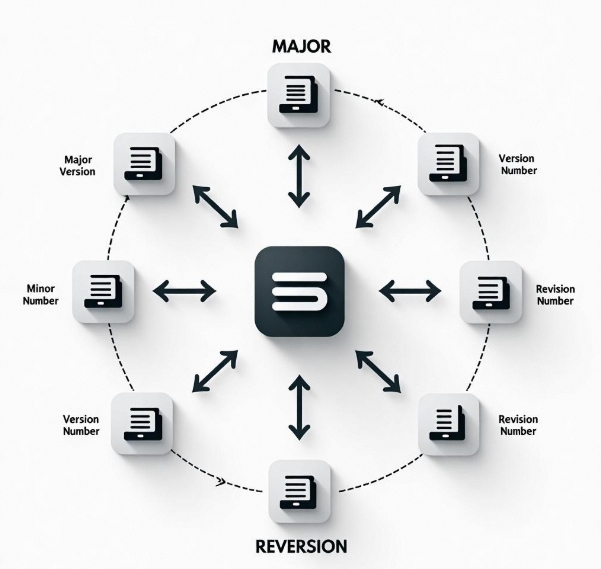Version Control and Update Release Strategies in Mini-Program Development
- latest articles
- 1.DApp Development & Customization: Merging Diverse Market Needs with User Experience 2.Analysis of the Core Technical System in DApp Project Development 3.How to achieve cross-chain interoperability in Web3 projects? 4.How does the tokenization of points reconstruct the e-commerce ecosystem? 5.How to Set and Track Data Metrics for a Points Mall? 6.What is DApp Development? Core Concepts and Technical Analysis 7.Inventory of commonly used Web3 development tools and usage tips 8.Development of a Distribution System Integrated with Social E-commerce 9.Six Key Steps for Businesses to Build a Points Mall System 10.What is DApp Development? A Comprehensive Guide from Concept to Implementation
- Popular Articles
- 1.Future Trends and Technology Predictions for APP Development in 2025 2.Analysis of the DeFi Ecosystem: How Developers Can Participate in Decentralized Finance Innovation 3.From Zero to One: How PI Mall Revolutionizes the Traditional E-commerce Model 4.DAPP Development | Best Practices for Professional Customization and Rapid Launch 5.Recommended by the Web3 developer community: the most noteworthy forums and resources 6.How to Develop a Successful Douyin Mini Program: Technical Architecture and Best Practices 7.From Cloud Computing to Computing Power Leasing: Building a Flexible and Scalable Computing Resource Platform 8.Shared Bike System APP: The Convenient Choice in the Era of Smart Travel 9.How to Create a Successful Dating App: From Needs Analysis to User Experience Design 10.From Design to Development: The Complete Process of Bringing an APP Idea to Life
With the rapid development of mobile internet, WeChat Mini Programs, as a new form of application, have become an essential tool for enterprise digital transformation and innovation. Mini Programs feature no need for download and installation, smooth user experience, and rich functionality, making them widely adopted. However, developing Mini Programs is not an overnight task; the version control and update release strategies involved often directly impact product stability and user experience. This article will delve into version control and update release strategies in Mini Program development, helping development teams efficiently manage iterations and optimizations.
I. Version Control in Mini Program Development
In the process of Mini Program development, version control is the foundation for ensuring code quality, stability, and collaboration efficiency. For a Mini Program, proper version control not only ensures smooth collaboration between developers and testers but also helps product managers and operations personnel accurately grasp the product iteration progress. Below, we will explain several key aspects of Mini Program version control in detail.
1.1 Choosing Version Control Tools
First and foremost is the selection of version control tools. Common version control tools include Git and SVN, but in Mini Program development, Git has become the most widely used tool due to its distributed version control system characteristics.
Git's advantage lies in its ability to manage versions locally on the developer's machine without relying on a centralized server. In multi-person collaboration scenarios, each developer can work independently and eventually merge their code into the main branch (master). This greatly enhances development efficiency and the convenience of code management.
1.2 Version Number Management
Version number management for Mini Programs is crucial, as it helps development teams and users clearly understand the changes and fixes in each version. Generally, version numbers consist of three parts: major version, minor version, and patch version.
Major Version: Indicates significant changes or restructuring in the application's main functionality, often accompanied by incompatible modifications.
Minor Version: Indicates the addition of some features while remaining compatible with the previous version.
Patch Version: Primarily used for bug fixes or minor optimizations, usually without introducing new features.
In Mini Program version number management, a reasonable versioning strategy helps development teams communicate better and facilitates operations personnel in version releases and rollbacks.
1.3 Branch Management Strategy
During Mini Program development, branch management strategies are typically adopted to organize development work. Common branch strategies include trunk-based development, Git flow, and GitHub flow. To ensure version stability and efficient development, development teams generally follow the following branch strategies:
Main Branch (master): The main branch is usually the most stable branch, representing the current most stable version. Each time a version is released, a tag is created from the main branch to mark the official release version.
Development Branch (develop): The development branch is used for developing and testing new features and is the main branch for daily work by team members. After development is completed, it is merged into the main branch.
Feature Branch (feature): Feature branches are used for developing new features, with each feature corresponding to an independent branch. After development is completed, it is merged into the development branch.
Hotfix Branch (hotfix): Hotfix branches are used for quickly fixing bugs in the production environment. Once fixed, they are immediately merged into the main branch and released, and also merged into the development branch.
1.4 Code Merging in Version Management
In Mini Program development, code merging is a common task in daily work. When multiple developers work simultaneously on different branches, code merging is inevitable. During code merging, development teams should adhere to the following points:
Pre-Merge Checks: Ensure the target branch (such as the development branch or main branch) is up-to-date and has undergone necessary code reviews and testing.
Conflict Resolution: If conflicts arise during merging, they need to be resolved promptly. Common conflict types include file modification conflicts and feature conflicts; the key to resolving these is ensuring logical code integrity.
Post-Merge Testing: After code merging, comprehensive functional testing is required to ensure no new bugs are introduced.
Through reasonable version control strategies, development teams can collaborate efficiently, iterate quickly, and ensure the stability and quality of Mini Programs.
II. Update and Release Strategies for Mini Programs
After Mini Program development is completed, how to release and update Mini Program versions to ensure users get the best experience is a very important issue. The update and release strategies for Mini Programs not only affect product stability but also directly relate to user satisfaction. Below, we explore several common update and release strategies for Mini Programs.
2.1 Basic Process for Mini Program Version Release
The release process for Mini Programs can be divided into the following steps:
Version Development and Testing: During the development phase, the development team completes code development and conducts internal testing to ensure functionality is normal and code quality is high.
Submission for Review: After development and testing are completed, the developer submits the Mini Program version to the WeChat Developer Platform for review. Once approved, the Mini Program can go live.
Launch and Release: After approval, the developer can release the Mini Program to the production environment, and users can access the latest version via WeChat.
Version Monitoring and Feedback: After the version is released, the development team needs to closely monitor the Mini Program's operational status, including user feedback, bug reports, performance monitoring, etc., to ensure the stability of the released version.
2.2 Hot Updates and Cold Updates for Mini Programs
Update releases for Mini Programs are generally divided into hot updates and cold updates:
Hot Update: Hot updates refer to updates where users do not need to actively re-download and install the Mini Program; updates are made directly through cloud configuration or file modifications. This update method is typically used for content updates, interface modifications, and other lightweight updates, reducing user wait times.
Cold Update: Cold updates require Mini Program users to re-download and install the new version. For updates involving feature additions or major bug fixes, cold updates are usually necessary.
WeChat Mini Programs provide robust version control and update mechanisms, allowing flexible responses to different update needs.
2.3 Gradual Rollout for Mini Programs
Gradual rollout (also known as phased release) is a common release strategy, especially for large-scale feature updates, as it reduces the risks associated with updates. The core idea of gradual rollout is to release the new version in stages and batches, gradually reaching all users.
Through gradual rollout, development teams can initially select a portion of users for version updates, collect their feedback, and check for potential bugs or performance issues after the update, ensuring the stability and reliability of the new version. Only after preliminary verification is successful can the new version be gradually rolled out to all users.
2.4 Rollback Strategy
In actual update release processes, it is inevitable to encounter situations where version updates fail or serious bugs occur due to certain reasons. To ensure the stable operation of Mini Programs, development teams need to formulate corresponding rollback strategies. The core of a rollback strategy is the ability to quickly revert to a stable version to avoid impacting users.
The rollback strategy should include the following aspects:
Backup Old Version: Before releasing a version, back up the old version's code and data to facilitate restoration if necessary.
Rollback Process: Establish a clear rollback process, including trigger conditions for rollback and specific operational steps, to ensure efficient and error-free rollbacks.
Post-Rollback Verification: After rollback, thorough verification is needed to ensure the old version operates normally and no new issues are introduced.
III. Conclusion
In the process of Mini Program development, version control and update release strategies are crucial, directly impacting development efficiency, stability, and user experience. Through reasonable version control strategies, development teams can ensure code quality and collaboration efficiency, while through scientific update release strategies, they can ensure the stability of each version and reduce the risks associated with updates. As Mini Programs continue to evolve, version control and update release strategies will become more flexible and efficient, providing development teams with more options and safeguards.
-

How to Increase User Stickiness and Activity Through Mini Program Development
With the development of the internet and mobile internet, mini-programs, as an e···
-

How can mini-program development assist in corporate marketing and e-commerce transformation?
In today's rapidly evolving mobile internet landscape, corporate marketing and e···
-

Offline Functionality Design and Data Synchronization in Mini-Program Development
With the rapid development of mobile internet, mini-programs, as a lightweight a···

 Blockchain
Blockchain












